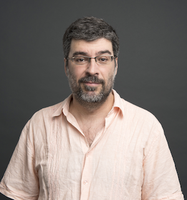
Luís A. Nunes Amaral
Professor of Engineering Sciences and Applied Mathematics
Professor of Medicine (by courtesy)
Professor of Molecular Biosciences (by courtesy)
Professor of Physics & Astronomy (by courtesy)
Engineering Sciences and Applied Mathematics
2145 Sheridan Road (Room M426)
Evanston, IL 60208, US
Phone:
+1 847-491-7850

Adoption of a high-impact innovation in a homogeneous population
Physical Review X 4, 041008 (2014)
Times cited: 2
Abstract
Adoption of innovations, whether new ideas, technologies, or products, is crucially important to knowledge societies. The landmark studies of adoption dealt with innovations having great societal impact (such as antibiotics or hybrid crops) but where determining the utility of the innovation was straightforward (such as fewer side effects or greater yield). Recent large-scale studies of adoption were conducted within heterogeneous populations and focused on products with little societal impact. Here, we focus on a case with great practical significance: adoption by small groups of highly trained individuals of innovations with large societal impact but for which it is impractical to determine the true utility of the innovation. Specifically, we study experimentally the adoption by critical care physicians of a diagnostic assay that complements current protocols for the diagnosis of life-threatening bacterial infections and for which a physician cannot estimate the true accuracy of the assay based on personal experience. We show through computational modeling of the experiment that infection-spreading models—which have been formalized as generalized contagion processes—are not consistent with the experimental data, while a model inspired by opinion models is able to reproduce the empirical data. Our modeling approach enables us to investigate the efficacy of different intervention schemes on the rate and robustness of innovation adoption in the real world. While our study is focused on critical care physicians, our findings have implications for other settings in education, research, and business, where small groups of highly qualified peers make decisions about the adoption of innovations whose utility is difficult if not impossible to gauge.